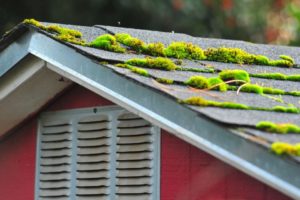Blog
June 20, 2017 in DIY Tips
HDMI ARC (Do You Know What It Is)
But first, a quick refresher on HDMI itself (feel free to skip ahead if you just need to know how ARC works).
HDMI: The basics
HDMI, which stands for High Definition Multimedia Interface, just celebrated its 10th birthday this month. You probably use it now, but you may not know how cool it actually is. The system was created as a faster, more efficient way to deliver high quality digital video and audio to and from consumer electronic devices. The current iteration is HDMI 2.0b, a baby step above HDMI 2.0a that now allows for transmission of 4K Ultra HD video with HDR — the next big thing in home theater) at up to 60 frames per second, as well as the ability to transmit up to 32 channels of audio.
A constantly evolving format, HDMI 2.1 will push the format even further when it is finalized, allowing for transmission of 8K resolution at up to 60 frames per second and 4K content at up to 120 frames per second, equating to faster and more efficient transmission to keep up with the monster file sizes of our video and audio future. Want more info? Here’s everything we know about HDMI 2.1 so far.
Like previous iterations, the current HDMI 2.0b format is compatible with all older hardware, but the nature of high resolution content means you may need to purchase high-speed HDMI cables for best results.
Though many people use HDMI strictly as a means for connecting cable boxes, Blu-ray players, and game consoles to their TV, it can do much more.
HDMI CableBesides transferring both video and audio in a single feed, HDMI was also designed to carry what the industry refers to as “handshake” information from one device to another. These shared transmissions were originally intended to communicate basic data for preventing content theft, as well as messages like the status and type of component connected.
But the system was also designed to share more complex messages as a part of what’s called Consumer Electronics Control (CEC). CEC lets a single remote control features on up to 15 connected devices. There are as many names for CEC as there are electronics brands: Samsung calls it “Anynet +,” for instance. Unfortunately, the system has never really lived up to its potential, and is often mistranslated or simply lost between components from different manufacturers. ARC can help.
The power of HDMI ARC
ARC can simplify your home theater system in two important ways. The first, and perhaps most useful feature HDMI ARC brings to the table is the ability to use one remote for all of your connected devices’ most common functions.
The most common example is for users who have added a soundbar (maybe one of our favorites?), home theater in a box (HTIB), or other secondary audio device to their TV. As long as both devices are equipped with ARC, simply connecting the HDMI cable to both devices’ ARC HDMI port will often allow for control of power, volume, and other features from your TV remote. In some cases, it will also simply transfer your TV audio to the unit automatically without having to deactivate the TV’s on-board speakers.
hdmi arc explained works care before
hdmi arc explained works care after
This feature is extremely useful for those who connect gaming consoles, Blu-ray players, set-top boxes, and other devices directly to the TV rather than an audio receiver. It allows for significantly better audio performance for all of your content than what you’ll get from a TV alone, but without having to think about the audio device.
Alternatively, ARC is also handy for other outboard components like streaming devices. Plugging a Google Chromecast into your TV’s ARC port, for instance, may allow you to automatically switch sources or even turn on your TV when you click the cast icon on your phone or tablet. You may find similar results with other components as well, including Blu-ray players.
In through the out door
As touched on above, the other important function ARC performs is sending signals both “upstream” and “downstream” over a single connection, meaning signals can travel in and out of a device over a single ARC HDMI port and cable. “Downstream” refers to signal that is being passed from the source, say a Blu-ray player, “down” to another device. “Upstream” would then mean sending signal the opposite way over the same cable. Why is that necessary? Convenience.
hdmi arc port portrait
For those who use an Audio/Video receiver (or a soundbar with multiple HDMI inputs) as a hub instead of their TV, ARC can still simplify cable connections a little. While audio and video from various sources is going directly to an A/V receiver in this kind of setup, any audio coming from the TV still needs to get to the receiver somehow. For instance, let’s say that the television is the preferred smart device in the bunch. Any audio from Netflix, Hulu Plus, etc., will only play out of the TV if it is sent to the receiver somehow. In the past, this would have required another cable, usually an optical digital cable. But with HDMI ARC, audio can be sent back down to the receiver through the same cable that already connects the two devices. For those with wall-mounted TVs, that’s one less cable to snake through the wall!
Another important point to consider is that the above method of connection is preferable for those who want to utilize the full sound capabilities of DTS and Dolby surround sound from Blu-ray, DVD, and gaming content. In many cases, connecting a component to the TV directly will reduce the signal to two-channel audio, and it may also reduce the sound resolution. Routing the audio signal through the receiver instead will preserve the original, high-definition audio signal, ensuring you get the best possible experience.
Let’s say you don’t have an A/V receiver, though. Some high-end soundbars (such as the Samsung HW-K950 Dolby Atmos) also include multiple HDMI inputs to allow a direct connection from a Blu-ray player or other source, allowing you to preserve the audio quality. Again, you can connect the bar to the TV via the ARC HDMI connection to pass the video signal to the TV, and also to receive audio back from TV programming, or any other components connected to the TV. If preserving the full-scale audio signal is important to you, you’ll want to do some due diligence about the available audio connections before you decide on a soundbar or other supplemental audio device.
What do I need to activate ARC?
All you need for ARC to work its magic is to make sure any connected components are equipped with ARC, and then simply connect them with a recently-made HDMI cable (2009 or later) . If your current HDMI cables are ancient it won’t cost you more than a few dollars to upgrade. In some rare cases you will also need to go into your components’ settings to activate ARC, but the vast majority of devices have it enabled by default, making it a plug and play affair.
Bam! Now you know more about ARC than almost everybody you hang-out with. Share the love!
June 7, 2017 in DIY Tips
Moss Removal from your Roof
Thick moss overtaking a roof can be picturesque. Lush green and verdant, it does give a house a fairy tale, Hobbit-like look. Beyond that, it contributes nothing else to a home and, in fact, will be seriously damaging if left unchecked.
When roof moss gets thick enough that it crowds out the shingles, there is no turning around at this point: the roof must be replaced.
A person remodels a house because it’s no longer stylistically suitable; because it’s not meeting functional needs; or because major repairs need to be made, and it turns out easier in the end just to completely remodel the thing.
No one has ever replaced an otherwise functional roof simply because it doesn’t meet stylistic needs. In most cases, roofs get replaced because they have reached the end of their natural lifespan or they have not been properly maintained.
If you maintain your roof well enough, you probably will not be replacing it. Have I driven the point home enough yet? I hope so, because now we’re going to kill some moss!
This guide covers two forms of moss removal applications: dry powder and liquid spray-on moss killers. Begin with an understanding on how moss develops on roofs.
How and Why It Happens
Areas lacking in sunlight are prone to moss. Moss on a roof begins as a thin dusting of green that you notice mostly from low angles.
Moss develops in perennially shady areas in places that tend to be cool and damp. You can live in a cool, damp area, but sections of the roof that get a couple of hours of sun per day may not develop moss.
It’s that third factor–lack of sun–that promotes moss growth.
Moss begins as a thin green layer on the tops of the shingles. The areas between shingles and the shingles’ edges also get moss because they are even more shaded.
As moss thickens, it will get under the shingles, acting like a jack and raising and pushing them upward.
Advertisement
Advertisement
It’s bad enough with asphalt or composite shingles, but if you have wood shingles it’s disastrous. Wood’s porous surface is prime real estate for moss growth. Once moss has adhered to wood shingles, it’s tougher to get off than the relatively smoother planes of composite or asphalt shingles.
Dry or Liquid Applications
■ Dry Powders
Dry powder moss killers are applied by first climbing the roof and sprinkling the application in lines parallel to the ridge of the house. Position each line about five feet from the adjoining line. Significant amounts of dry powder are required to cover a house. When it rains, the water will mix with the powder and run down toward the eaves. After about a week, the moss should clear.
One disadvantage of the dry powders is that white streaks remain on the roof until a hard rain or two have washed them away. Even then, chunked or caked powder may remain for several weeks.
Dry moss killers are very much hands-on. Often, you will find that you did not dispense enough powder on the first pass to kill the moss, necessitating another trip to the store for more product.
■ Liquids
Liquid applications attach to a garden hose and mix on a metered basis as the water runs. You can remain on the ground, as long as you have sufficient water pressure to reach the ridge of the roof. Liquid moss killers more evenly cover the roof than dry powders.
One advantage of liquids is that your roof will not have unsightly white lines of powder; the liquid is clear.
One disadvantage of liquid moss-killers is that they are difficult to visually follow. It is hard to keep track of where you have been and where you are going. One way to deal with this is to make sure that you start with a perfectly dry roof.
Liquid moss killers tend to be more expensive on a square foot by square foot basis than powdered moss killers.
Advertisement
Advertisement
If you do not like heights, liquid moss killers are the way to go. One compromise is to mount a ladder about halfway up and spray from that point. This allows you to better direct the spray, without climbing onto the roof.
Bayer 2-in-1 Algae and Moss Killer
Bayer 2-in-1 Algae and Moss Killer is potassium soap of fatty acids and inert ingredients in liquid form. Unlike zinc-based moss-killers, it claims to be non-corrosive to metals. Roofs do have a lot of metal–vents, gutters, drains, nails, cables–so this can be a plus.
Application is effortless. You screw the end of your garden hose to the bottle, turn on the water, and spray. You can even apply the product from the ground, no roof-climbing required.
The spray nozzle creates a nice, flat stream that’s easy to apply. Be careful because it’s easy to deplete the bottle long before you’ve covered all of your mossy area.
The solution runs through quickly, so hit your target once and move on. If you want to double-spray, do it after the initial run-through.
Moss B Ware
Moss B Ware is 99% zinc sulfate monohydrate, a proven moss killer and deterrent. In fact, one way to prevent moss from growing in the first place is to attach zinc strips to the ridge of your roof. Over time, as rain falls, zinc residue coats the roof, prevent moss-growth.
Cheapness and availability are strong suits. Moss B Ware is Home Depot’s favored roof moss killer.
Moss B Ware can be mixed with water at the rate of 3 pounds of product to 5-10 gallons of water, killing moss over 600 square feet, though this negates the visual-tracking properties of granular-based moss killers.
Moss B Ware does not deliver easily, as it is often caked up and hard. The product can be broken up by hitting the container against a hard surface or tapping it gently with a hammer. But the issue is that the cardboard container will not tolerate much abuse before it splits open.
With that flexible cardboard container, too, the plastic top tends to come loose. When this happens, you may end up with a large pile of product in one spot.
Lilly Miller Moss Out Review
Like Moss B Ware, Moss Out from Lilly Miller is 99% zinc sulfate monohydrate. Same active ingredients, different texture and delivery system.
Moss Out is more granular-–less powdery–than Moss B Ware. This makes it easier to shake out.
Moss Out’s 6 lb. plastic container is a bit heavy to hold when you first start shaking, but it lightens up pretty fast.
June 2, 2017 in Renovation
Home Repairs When Selling
HELP ME GET MY HOME READY FOR SALE!
There are tons of home repairs you could do to improve the overall appeal of the home you’re trying to sell. It’s important to keep in mind what areas of your home are most in need of repair, then prioritize the list by what will have the greatest return to the overall marketability of your home. Most home repairs fall into these two categories:
- Minor repairs
Based on years of performing handyman services throughout the country, Mr. Handyman knows the little stuff can really add to your home’s value. Simple touch ups like drywall repair and adding a new coat of paint in needed rooms can boost your overall appeal to prospective buyers.
When painting, choose a neutral color, like a soft green, tan, or gray. A neutral backdrop helps people focus on your home’s best features, instead of a color they personally wouldn’t choose. Have Mr Fix paint key areas inside your home.
Steam cleaning carpets or polishing hardwood floors can offer great value over replacing these flooring options, which is likely to cost thousands of dollars. It’s also smart to get rid of any signs of pets or smoking in the home by thoroughly vacuuming and deodorizing.
Another quick way to improve the way your home shows is to purchase updated light fixtures. There are reasonable options for every area of your home and helps build a “move in ready” impression of your home. Mr Fix can replace outdated fixtures.
- Major repairs
Make sure any big repairs are done prior to putting your home on the market. If your roof is in dire need of repair, chances are no one is going to give you a fair price if it remains unfixed. Same goes with issues to the foundation, etc. So if you have major work to do on your home’s structure, it’s best to get them done before putting a listing together. It may not make you any more profit, but will ensure a bank is willing to fork out money to those looking for a home loan on your property.
Still have questions on what could be done to your home before selling? Contact us today!







